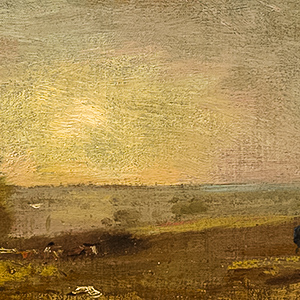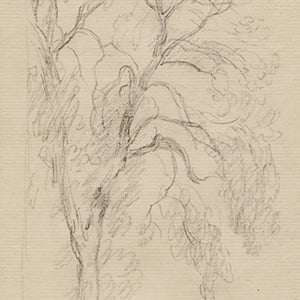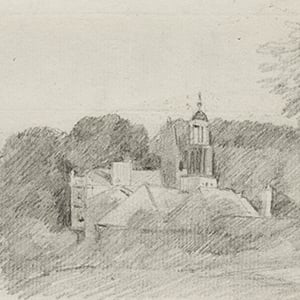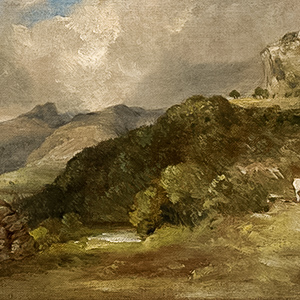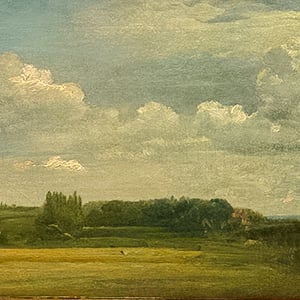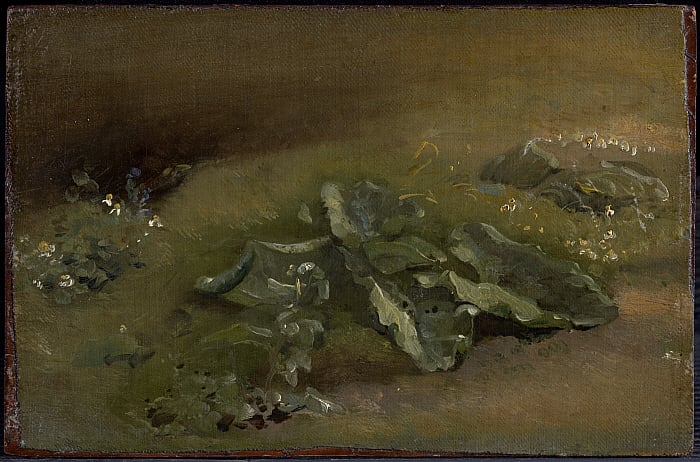
John Constable
English, 1776–1837
Study of a Burdock
c. 1810–14 or c. 1828
Constable rarely painted studies of individual plants, which makes this sketch of a humble burdock quite unusual. Touches of white paint define the volume and texture of the plant’s curling, heart-shaped leaves. The artist even recorded the tiny holes in the leaves chewed by insects. A committed naturalist, he once advised a young painter to “never do anything without nature before you.”
| Medium | oil on canvas, mounted on panel |
| Dimensions | Panel: 7 1/4 x 10 15/16 in. (18.4 x 27.8 cm) |
| Object Number | 2007.8.45 |
| Acquisition | Gift of the Manton Art Foundation in memory of Sir Edwin and Lady Manton, 2007 |
| Status | On View |
Image Caption
John Constable, Study of a Burdock, c. 1810–14 or c. 1828, oil on canvas, mounted on panel. Clark Art Institute, gift of the Manton Art Foundation in memory of Sir Edwin and Lady Manton, 2007.8.45
Select Bibliography
EUROPEAN PAINTINGS CATALOGUE ENTRY
Provenance
Probably Isabel Constable, the artist’s daughter, by descent (her sale, Christie’s, London, 17 June 1892, possibly no. 240, as one of Buying Flowers; and three studies of flowers); Thomas J. Barratt (probably from 1892, d. 1914);¹ Baron Kojiro Matsukata (c. 1914–c. 1930, sold to private collection); private collection, Japan (c. 1930–1954, sold to Mizushima); Tokuzo Mizushima (1954–1983, his anon. sale, Sotheby’s, London, 2 Mar. 1983, no. 72, ill., bought in); sale Sotheby’s, London, 14 Mar. 1984, no. 103, ill.; sale, Christie’s, London 24 Apr. 1987, no. 49, ill.; sale Christie’s, London, 14 July 1994, no. 42, ill., sold to Nahum; [Peter Nahum, London, sold to Manton, 26 Jan. 1996]; Sir Edwin A. G. Manton, New York (1996–d. 2005); Manton Family Art Foundation (2005–7, given to the Clark); Sterling and Francine Clark Art Institute, 2007. 1. The early provenance comes from an inscription on the reverse of the panel which reads: “Sketch / by / John Constable RA / Bought at Christie’s / at the sale of Isabella Constable / Thomas J. Barratt.” In the sale catalogue of 1892, this work might be identifiable as one of three included under no. 240, although an annotation in the copy at the Rijksbureau voor Kunsthistorische Documentatie, The Hague, indicates that the lot was sold to “A. Smith.”

